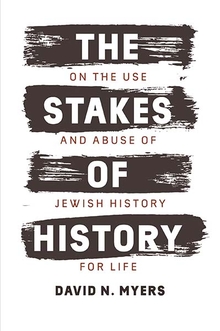Rituals of Childhood
WARNING
You are viewing an older version of the Yalebooks website. Please visit out new website with more updated information and a better user experience: https://www.yalebooks.com
Jewish Acculturation in Medieval Europe
Ivan G. Marcus
Marcus traces ancient Jewish and Greco-Roman elements in the rite and then analyzes it from different perspectives, making use of narrative, legal, poetic, ethnographic, and pictorial sources, as well as firsthand accounts. He then describes contemporary medieval Christian images and initiation rites--including the eucharist and the Madonna and child--as contexts within which to understand the ceremony. He is the first to investigate how medieval Jews were aware of, drew upon, and polemically transformed Christian religious symbols into Jewish counterimages in order to affirm the truth of Judaism and to make sense of living as Jews in an intensely Christian culture.
A selection of the Jewish History Book Club
"This fascinating story of how young Jewish boys were introduced to formal Torah study in the Middle Ages presents a new perspective on many questions of medieval history. It will be of interest to scholars in Jewish studies, cultural studies, and anthropology."—William Chester Jordan, Princeton University
"Marcus brings anthropology to one of the heartlands of Jewish history: medieval Ashkenaz. The results are fascinating and full of implications for other realms of Jewish studies."—Harvey Goldberg, Hebrew University, Jerusalem
"Ivan Marcus' book is a brilliant, refreshing, and pathbreaking exercise in the application of cultural anthropology to medieval Jewish history. Discussing in detail one single rite de passage, Marcus presents the culture of medieval Jews as centered in their identity while at the same time open to reinterpreting themselves in light of the Christian surrounding culture. An outstanding new approach to Jewish history in Christian Europe, it will undoubtedly shape many future discussions on the most appropriate historical method for Jewish history."—Robert Bonfil, Hebrew University, Jerusalem
"In this short but exciting book, Professor Marcus examines one medieval Jewish rite of passage in depth—the ceremony marking the initiation of young boys into the cheder on Shavout—and, by utilising a cultural-anthropological approach, suggests a novel interpretation of Jewish identity during the Middle Ages. . . . This is a well-researched enterprise and is the product of many years of careful reflection by a master of his craft. . . . A book that should be read and enjoyed."—John Cooper, Jewish Chronicle
"[A] challenging book which offers an anthropological insight into cultural structures and core values that developed among medieval Ashkenzai Jewry. . . . The use of narrative, legal, poetic and ethnographic sources, and Hebrew and Latin manuscript illuminations contributes to a comprehensive and elaborated description of the ritual."—Sophia Menache, Patterns of Prejudice
"As a piece of scholarship . . . Rituals of Childhood is impeccable. . . . As a piece of anthropological reconstruction it makes for compelling reading."—Haim Chertok, Jerusalem Post Literary Supplement
"An important work, both instructive and entertaining. Marcus presents new information and ideas that can be enjoyed by the general reading public as well as scholars in the field of Judaica. . . . This work is well written, thoughtful, and fascinating."—James Seaver, History: Reviews of New Books
"What Marcus has done in this book is articulate the symbolic language that underlies these rituals and makes of them a coherent faith-statement. We need more such anthropological studies that will cross cultural lines and teach us how to read the language in which rituals are meant to speak. This is a helpful model of the kind of research that we hope other scholars will emulate."—Rabbi Jack Riemer, South Florida Jewish Journal
"Marcus . . . unravels the Jewish and Greco-Roman elements; compares contemporary Christian rites and images; and draws on narrative, legal, poetic, ethnographic, and pictorial resources as well as first-hand accounts."—Reference & Research Book News
"What the author has done in this book is articulate the symbolic language that underlies these rituals and makes of them a coherent faith-statement."—Rabbi Jack Riemer, Jewish Bookworld
"For too long West European Jewish history has been conceived in isolation from the larger society. With this boo, we return to the end of the nineteenth century when historians like Moritz Güdemann, sensitive to the process of Jewish acculturation, would not have started their histories without first taking into account what was happening in the surrounding Christian society."—Joseph Shatzmiller, History of Education Quarterly
"Marcus' book is an extremely important landmark in the scholarly study of Jewish-Ashkenazic folklore . . . and presents an unexpected breakthrough in hitherto untravelled directions. For this reason, as well as for the book's aesthetic and literary merits—the beautiful, lucid, and orderly constructed presentation—I shall not be exaggerating if I call it an exemplary, classic work, which will surely encourage further research in the field."—Israel Ta-Shma, Jewish Quarterly Review
"The author brings a rich mixture of the talents of scholar, detective, and anthropologist to his work, which is part of a growing field of worldwide interdisciplinary endeavour, viewing Judaism not only as the sacred, textual property of a highly literate rabbinical elite but also as a civilization, a way of life or a religious culture."—Tony Woolfson, Jewish Quarterly
"Marcus is breaking new ground in this study which attempts to elucidate the reasons, using anthropological and historical tools, for the appearance and disappearance in Ashkenaz of an initiation ritual for young children into the world of Torah study."—Harvey Hames, Journal of Jewish Studies
"The book is magnificent, richly detailed, and well argued throughout. .. . Highly recommended for all medieval historians as well as anyone interested in the processes of cultural interaction."—Daniel Boyarin, American Historical Review
"Students of medieval history, Jewish history, and cultural studies will profit from Marcus's accomplishment."—Stephen D. Benin, Religious Studies Review
Publication Date: October 11, 1998
18 b/w illus.








